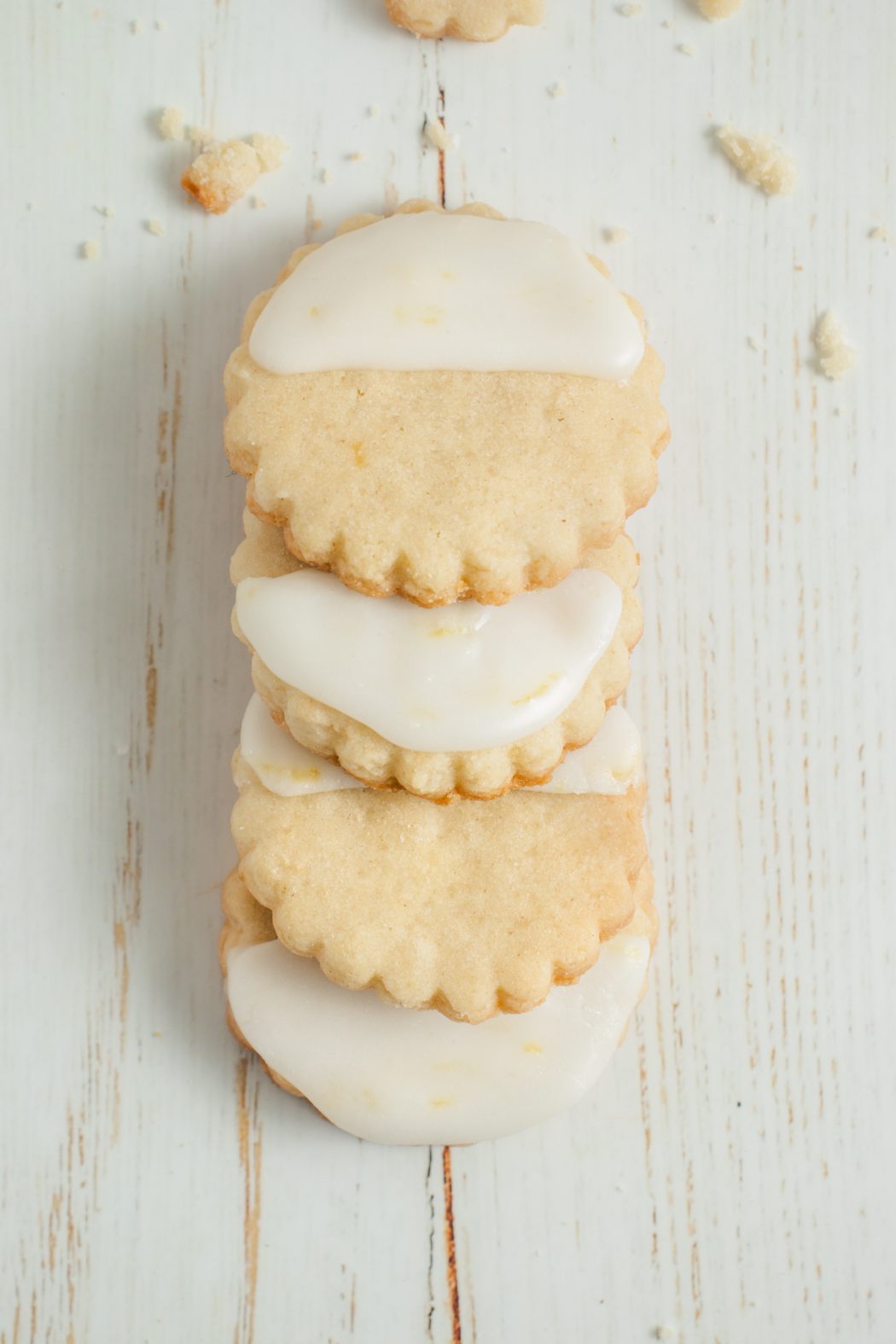
Lemon shortbread cookies blend buttery richness with a burst of citrus. They use fresh lemon zest and juice for a tangy sweetness that pairs with a classic shortbread base.
With just a handful of ingredients like butter, sugar, flour, and fresh lemon, you get maximum flavor for minimal effort. These cookies are as simple as they are delicious.
Lemon shortbread is all about versatility and simplicity. You can shape the dough into cut-outs, bars, or wedges—whatever suits your mood.
The cookies bake fast and taste great plain, but a glossy lemon glaze takes the citrus up a notch. They work for afternoon tea or as a light dessert.
For more great lemony desserts, try: Lemon Poppy Seed Muffins, Lemon Cranberry Scones, and Lemon Blueberry Pastry Braid.
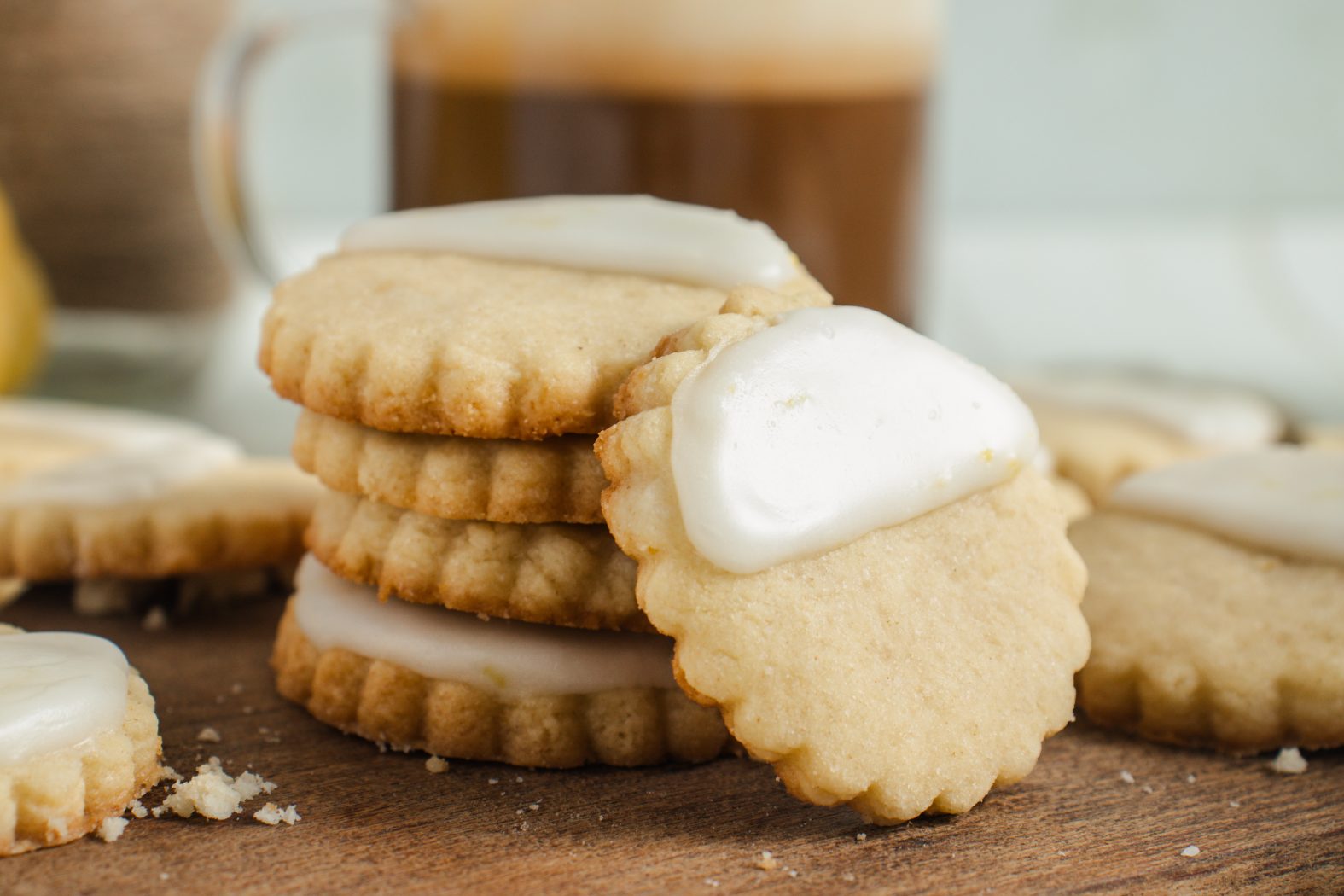
What Are Lemon Shortbread Cookies?
Lemon shortbread cookies are buttery treats that mix traditional shortbread with bright citrus flavor from fresh lemon juice and zest. They keep that classic crumbly texture but add a tangy twist.
Origins and History
Shortbread cookies go way back to 16th century Scotland. The original recipe used just butter, sugar, and flour.
The “short” in shortbread refers to the high fat content, which gives that tender, crumbly bite. Scottish bakers shaped them into rounds and scored them into “petticoat tails.”
These cookies became a sign of hospitality, especially during holidays. Later, bakers started adding citrus, and lemon shortbread was born.
Lemon juice and zest brought a brighter flavor, but the beloved buttery texture stuck around.
Key Characteristics
Lemon shortbread cookies have a few things that set them apart. The texture is tender and crumbly, so they melt in your mouth but never feel dry.
The flavor? It’s all about rich butter and bright lemon. Fresh lemon zest brings intense citrus oils, while lemon juice adds tartness to balance the sweet.
Here’s what goes into most lemon shortbread:
- Butter (softened, not melted)
- All-purpose flour
- Sugar (granulated or powdered)
- Fresh lemon juice and zest
- Salt
- Egg yolk (for richness)
Mix the dough just enough—overmixing makes tough cookies. Many people like to add a lemon glaze made from powdered sugar and fresh juice.
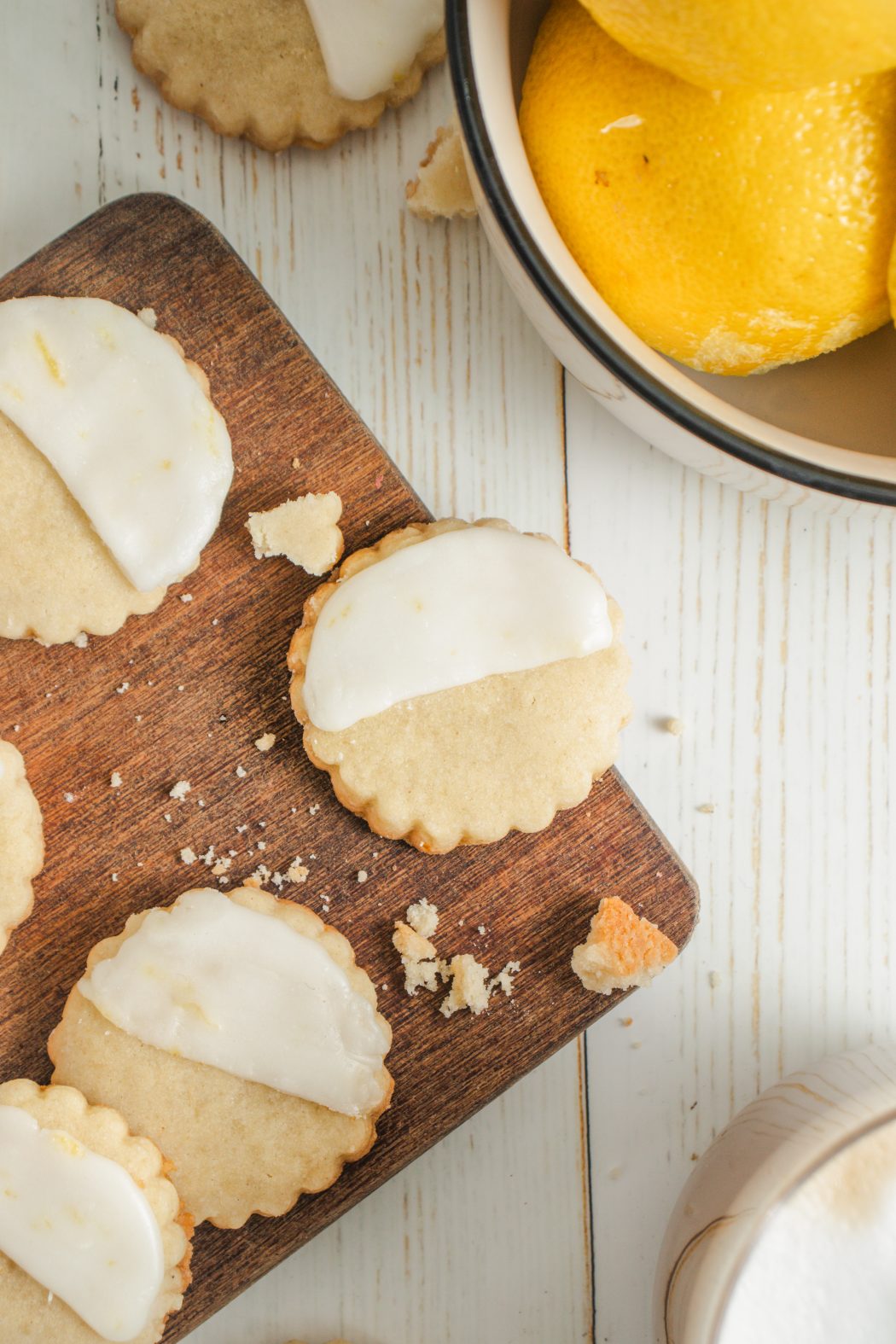
Why Lemon Shortbread Is Unique
Lemon shortbread stands out because of its bright, tangy flavor. The citrus cuts through the butteriness without overpowering it.
Lemon zest brings essential oils for big flavor, and the juice adds moisture and tartness. It’s a refreshing twist on the classic.
Unlike some lemon cookies that turn out soft or cakey, lemon shortbread keeps that crisp, sandy texture. They hold their shape and have clean edges when cut.
You can shape the dough into rounds, bars, or whatever you like. Plain or glazed, these cookies always let the citrus shine through the buttery base.
Essential Ingredients for Lemon Shortbread Cookies
Quality ingredients really matter here. The right butter, fresh citrus, and proper flour and sugar ratios make all the difference.
Choosing the Best Butter
Unsalted butter gives you more control over the salt. It should be soft at room temperature but still hold its shape if you press it.
Go for high-quality butter with at least 80% fat. European-style butter makes even more tender cookies.
If you only have salted butter, that works too—just cut the added salt in half. Getting the butter temperature right is key.
Cold butter won’t cream well. But if it’s too warm, the dough gets greasy and spreads too much.
Importance of Fresh Lemon Zest and Juice
Fresh lemon zest delivers the strongest lemon flavor. The oils in the zest add bright citrus notes that dried zest just can’t match.
One medium lemon usually gives about 1 tablespoon of zest and 2-3 tablespoons of juice. Always zest before juicing—it’s just easier.
Fresh lemon juice brings tartness and moisture. Bottled juice can’t compete and often has preservatives.
Lemon Extract vs Fresh Ingredients:
- Fresh zest: Bold, natural lemon oils
- Fresh juice: Bright acidity and moisture
- Lemon extract: Concentrated but can taste artificial
Using both zest and juice gives you layers of lemon flavor in every bite.
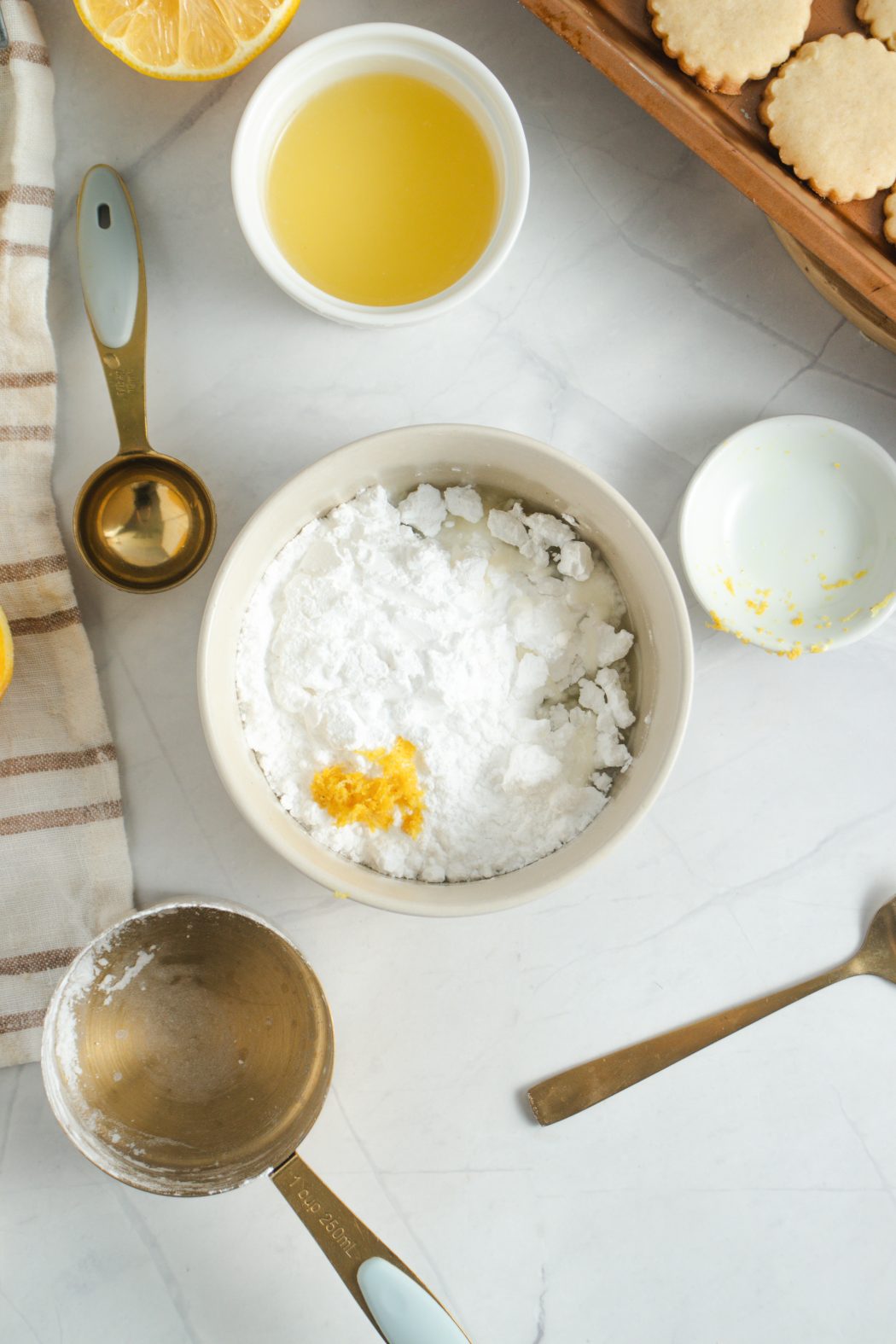
Selecting the Right Flour and Sugar
All-purpose flour is the go-to for lemon shortbread. It gives enough structure without making the cookies tough.
Spoon flour into your measuring cup and level it off. Too much flour means dense cookies, too little and they’ll spread.
Sugar Options:
- Granulated sugar: For tender texture and easy creaming with butter
- Powdered sugar: For delicate, melt-in-your-mouth cookies
- Confectioners’ sugar: Same as powdered, contains cornstarch
Granulated sugar works best in the dough. It creams nicely and doesn’t overpower the lemon.
Use powdered or confectioners’ sugar for glazes—its fine texture is perfect.
Flavor Enhancers and Variations
Vanilla extract adds depth without stealing the show. Stick with pure vanilla if you can.
One egg yolk makes the cookies richer and helps everything stick together. Whole eggs add too much structure for this style.
Salt is a must for flavor balance. Fine sea salt or table salt spreads evenly through the dough.
Optional Additions:
- Cornstarch (1-2 tablespoons): For extra tenderness
- Lemon extract (1/2 teaspoon): For a stronger lemon kick
- Almond extract (1/4 teaspoon): Subtle nutty background
All these ingredients play their part to make each bite buttery and bright.
How to Make Lemon Shortbread Cookies
To make lemon shortbread, you’ll cream butter and sugar, mix in flour carefully, and chill the dough before rolling and cutting.
Preparing the Shortbread Dough
Start with softened butter. It should be soft to the touch but not melting.
Let it sit at room temperature for 30-60 minutes, or cut it into pieces to speed things up.
Use a hand mixer or stand mixer to beat butter, sugar, and lemon zest for 2-3 minutes. You want it light and fluffy—those air pockets make the cookies tender.
Always zest lemons before juicing. Trust me, it’s way easier.
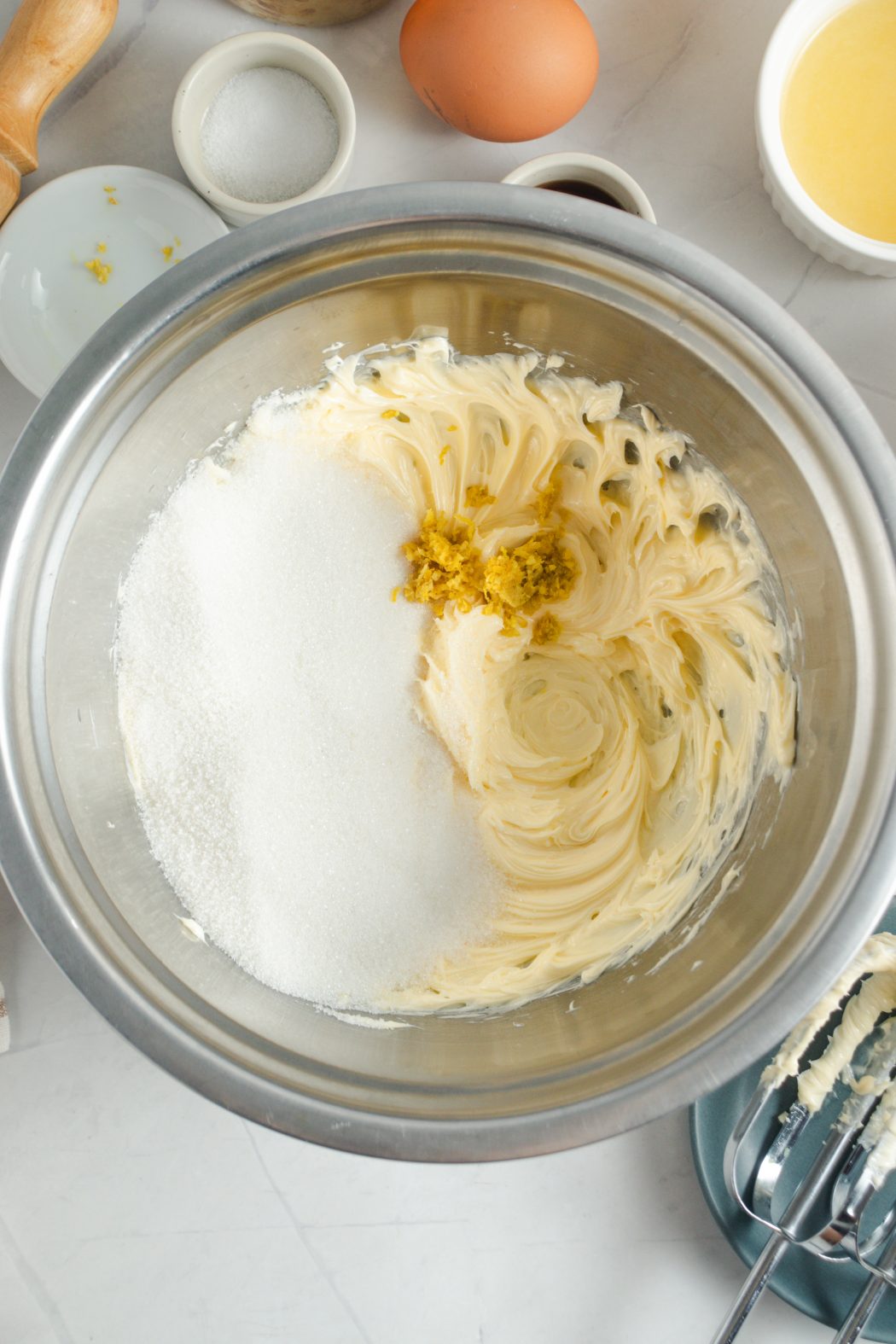
Mixing and Combining Ingredients
After creaming, add vanilla, fresh lemon juice, and salt. Mix and scrape the bowl as you go.
Beat in the egg yolk next for a little extra richness. It helps bind the cookie dough.
Add flour gradually on low speed. The dough will look crumbly at first—don’t stress.
Scrape the sides and bottom often. Stop mixing as soon as the flour disappears; overmixing leads to tough cookies.
Chilling and Rolling the Dough
Dump the crumbly dough onto a clean surface and press it into a ball with your hands. The warmth helps bring it together.
Flatten into a 1-inch thick disk, wrap in plastic, and chill for at least 15 minutes. Cold dough is easier to roll and cut.
Roll out the dough on a floured surface to 1/4 inch thick. Slip parchment underneath to keep it from sticking.
Roll from the center out, turning the dough now and then for even thickness.
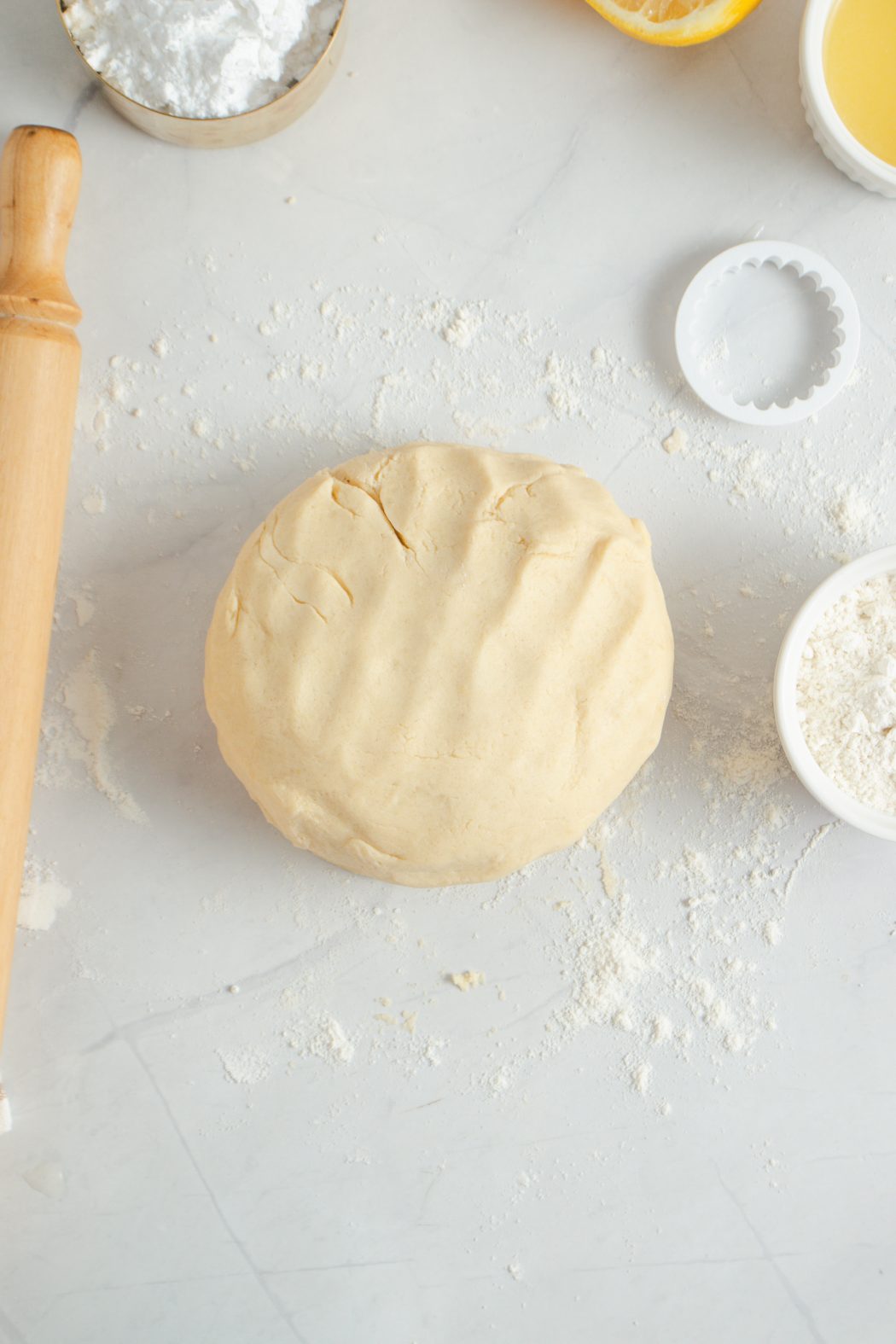
Cutting and Shaping Cookies
Lightly flour your cookie cutters. Press straight down—no twisting—for clean edges.
Set the cut cookies on a parchment-lined baking sheet, leaving an inch between them. They’ll spread just a bit.
Press leftover dough together, roll it out again, and keep cutting. You can repeat this a couple of times before the dough gets tough.
Wax paper is handy for stacking cut cookies before baking. Just layer them with wax paper in between.
Baking Lemon Shortbread Cookies
Baking technique really matters for lemon shortbread. You want that signature crumbly texture, not tough or dry cookies.
Baking Time and Temperature
Bake at 350°F for about 8-10 minutes. This keeps things gentle so the cookies cook through without browning too fast.
They’re ready when the edges look barely golden and the centers are still pale. If you overbake, you’ll lose that perfect texture.
Check at 8 minutes—shortbread can go from perfect to overdone fast. They’ll keep cooking a bit on the hot baking sheet after you pull them out.
If you cut them thick (like ½ inch), tack on another minute or two. Thinner cookies might only need 7-8 minutes.
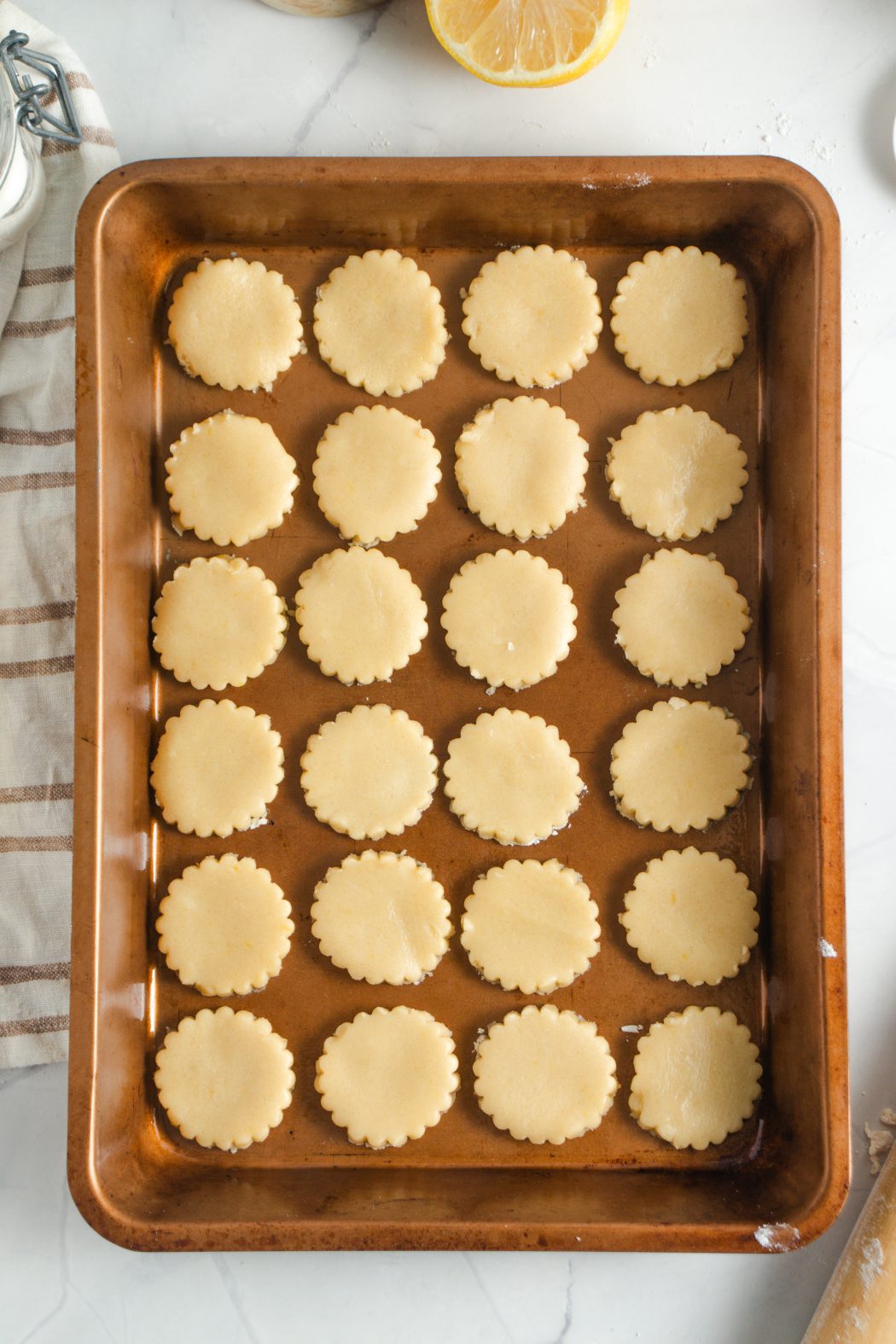
Tips for Even Baking
Keep the baking sheet in the center of your oven for even heat. Space cookies at least an inch apart so they don’t run together.
Use light-colored baking sheets if you can. Dark pans heat up more and can brown the bottoms too fast.
Rotate the baking sheet halfway through if your oven’s a little uneven. That way, all the cookies brown at the same pace.
Try not to open the oven door much. Fluctuating temps can mess with the final texture.
Achieving Perfect Texture
The secret to great shortbread texture is to mix as little as possible once you add the flour. Mixing too much forms gluten, which makes the cookies tough instead of tender and crumbly.
Roll your dough to exactly ¼-inch thickness. That way, everything bakes evenly—thicker parts stay doughy, and thin spots get too crisp.
Chilling the dough for 15 minutes before baking helps the cookies keep their shape. This short chill stops them from spreading too much in the oven.
Use butter that’s at room temperature—soft enough to press a finger into, but not melted. Melted butter makes greasy cookies, and cold butter just won’t cream with the sugar.
The finished cookies should have that classic sandy, crumbly shortbread bite. They should melt in your mouth, not make you chew forever.
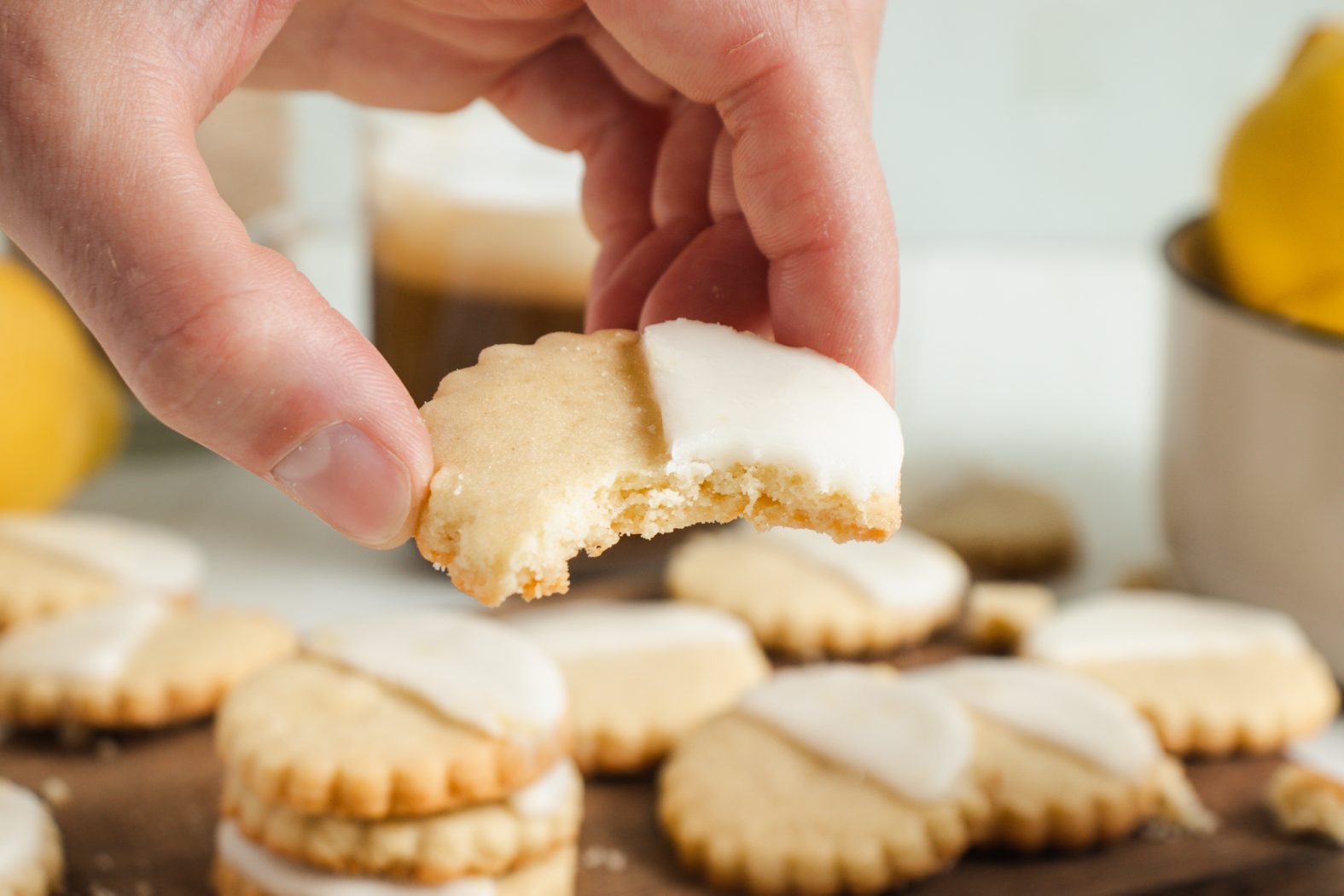
Decorating Lemon Shortbread: Glaze, Icing, and Drizzle
A simple lemon glaze with powdered sugar and fresh lemon juice is the perfect finish for these cookies. Depending on how you apply it, you get different looks and textures, from a sheer drizzle to a thick, glossy coat.
Making a Simple Lemon Glaze
The basic lemon glaze only needs three things: powdered sugar, fresh lemon juice, and lemon zest. Start with a cup of powdered sugar in a bowl.
Slowly add 2-3 tablespoons of fresh lemon juice. Whisk until you get a smooth, lump-free consistency.
Consistency matters for how you use it:
- Thin glaze: 3 tablespoons lemon juice for drizzling
- Thick glaze: 2 tablespoons for dipping
- Medium glaze: 2.5 tablespoons for brushing
Toss in ½ teaspoon of lemon zest for a flavor boost and a pop of color. Zest adds those tiny flecks that look and taste amazing.
Test the glaze by lifting your whisk; it should flow, but not run off like water. Adjust with more sugar or juice if you need to.
How to Apply Lemon Drizzle
Lemon drizzle works best once the cookies are totally cool. Set them on a wire rack with parchment underneath to catch drips.
Use a fork or small spoon to make thin lines across each cookie. Hold it a couple of inches above for even lines.
Try a quick zigzag for patterns, or go for straight lines. For a crosshatch look, drizzle one way, then the other.
Some tips:
- Work quickly before the glaze thickens up
- Let the first layer set for 10 minutes before adding more
- Wipe off your utensils between rounds
The drizzle should be loose enough to flow, but not so thin it runs everywhere. Let cookies sit for 15-20 minutes so the glaze can harden.
Finishing with Lemon Icing
Lemon icing gives you that full, smooth cookie coverage. For this, use the thick glaze consistency.
Dip each cookie face-down into the icing. Press gently so the top is fully coated.
Lift it and let the extra icing drip back into the bowl. Hold for a few seconds, then set on the rack.
For brushing icing on:
- Use a pastry brush and medium-consistency glaze
- Sweep in smooth strokes from the center out
- Don’t overwork it—just enough to cover
Sprinkle on some extra zest or coarse sugar while the icing’s wet. It sets in 20-30 minutes, leaving a glossy finish and a punch of tangy sweetness.
Storage, Make-Ahead, and Serving Suggestions
Lemon shortbread cookies stay fresh at room temperature for up to a week. You can prep them days in advance, and the dough freezes easily for a month, so making a big batch is no hassle.
Storing and Freezing Cookies
Keep finished cookies in an airtight container at room temp. They’ll taste great for up to a week, though they soften a bit after the first day.
Layer parchment paper between cookies to stop them from sticking, especially if they’re glazed. Store containers away from heat and sunlight.
To freeze baked cookies:
- Wrap each cookie in plastic wrap
- Put them in freezer bags for up to 3 months
- Let them thaw at room temperature for 15-20 minutes
Unglazed cookies freeze best. Add glaze after thawing for the nicest finish.
Making Dough Ahead of Time
Make the dough up to 3 days ahead. Wrap the flattened disk tight in plastic and refrigerate. Let it sit out for 5-10 minutes before rolling.
For longer storage:
- Wrap dough in plastic wrap
- Slip into a freezer bag
- Freeze up to a month
- Thaw overnight in the fridge
Some people like to roll the dough into logs and slice to bake. If you do, wrap the logs in wax paper first, then plastic wrap, before freezing.
You can also press the dough into a pan and chill until you’re ready to bake.
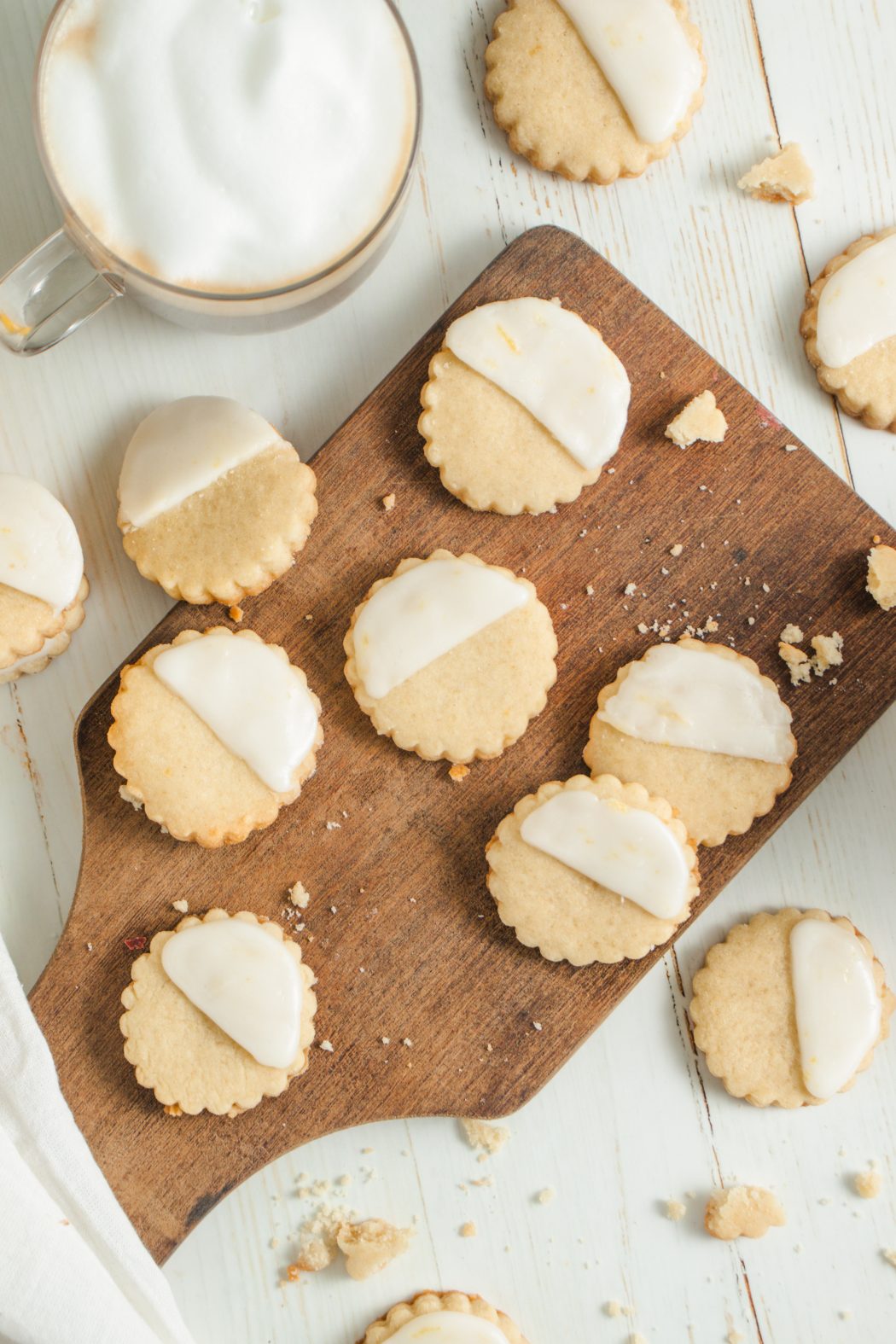
Best Ways to Serve
Serve lemon shortbread with hot tea or coffee. The citrus flavor is perfect with Earl Grey or chamomile. They’re also great with vanilla ice cream or fresh berries.
Some favorite ways to serve:
- Tea parties: Stack on tiered stands
- Gifts: Pack in cute tins
- Dessert plates: Offer 2-3 per person
- Ice cream sandwiches: Sandwich sorbet between two cookies
These cookies are a hit at spring celebrations and summer gatherings. They’re light enough for warm days but rich enough for special occasions.
Cut them into fun shapes for holidays or kids’ parties. Hearts are cute for Valentine’s, and flowers work for spring.
Frequently Asked Questions
Here are some quick answers about ingredients, baking, dietary tweaks, storage, and flavor tricks for making the best lemon shortbread cookies.
What are the key ingredients required for making Lemon Shortbread Cookies?
Lemon shortbread cookies only need seven basic ingredients. The main ones are unsalted butter, sugar, all-purpose flour, and salt.
Fresh lemon juice and zest add the citrus kick. An egg yolk makes the dough richer and helps it hold together.
Vanilla extract rounds out the flavor. Some folks add a powdered sugar glaze with more lemon juice and zest for extra zing.
How long should Lemon Shortbread Cookies be baked to achieve the perfect texture?
Bake lemon shortbread cookies at 350°F for 8 to 10 minutes. They’re ready when they’re pale with just a hint of gold at the edges.
Check them at 8 minutes—shortbread goes from perfect to overbaked pretty fast. Overbaked cookies get hard and lose their delicate texture.
Let them cool on the baking sheet; they’ll firm up as they cool. They should feel set but not browned when you take them out.
Can Lemon Shortbread Cookies be made gluten-free without compromising the taste?
You can make gluten-free lemon shortbread with a 1:1 gluten-free flour blend. This keeps the texture close to the original.
They might be a bit more crumbly, but adding an extra egg yolk helps bind the dough. Almond flour or rice flour blends also work well.
The lemon flavor stays bright and tasty with these swaps.
What is the proper way to store Lemon Shortbread Cookies to maintain their freshness?
Keep lemon shortbread cookies in an airtight container at room temp. They’ll stay good for up to a week if you store them right.
Layer parchment between cookies to keep them from sticking. Wait until the glaze sets before stacking glazed cookies.
You can freeze unbaked dough wrapped in plastic for up to a month. Thaw it in the fridge before rolling and cutting.
Is there a vegan alternative for the butter usually used in Lemon Shortbread Cookies?
Vegan butter works well in lemon shortbread. Use the same amount and make sure it’s softened first.
Coconut oil is another option, but use it solid. The texture changes a bit, but the cookies still taste really good.
Swap the egg yolk for a flax egg or just leave it out. The cookies will be a little more crumbly but still hold up.
How can the lemon flavor be intensified in Lemon Shortbread Cookies without making them too tart?
Try adding more lemon zest instead of extra juice. Zest packs a punchy lemon flavor but doesn’t make the cookies too tart or soggy.
Fresh lemons always beat bottled juice for taste. Usually, one big lemon gives you about a tablespoon of juice and a teaspoon of zest, so plan accordingly.
If you want even more citrus kick, mix in half a teaspoon of pure lemon extract with your vanilla. It’s a simple way to layer in that bright lemony vibe.
Lemon Shortbread Cookies
Ingredients
- 1/2 cup butter unsalted, softened
- 1/2 cup sugar granulated
- 1 tsp vanilla extract
- 1 tbsp lemon juice
- 1 lemon zested
- 1/4 tsp salt
- 1 egg yolk large
- 1.25 cup flour all-purpose
Lemon Glaze
- 1 cup sugar powdered
- 2 tbsp lemon juice
- 1/2 tsp lemon zest
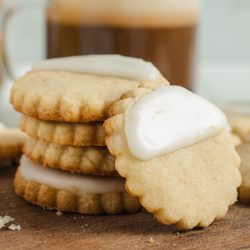


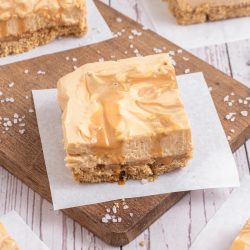
Love the lemon flavor!!